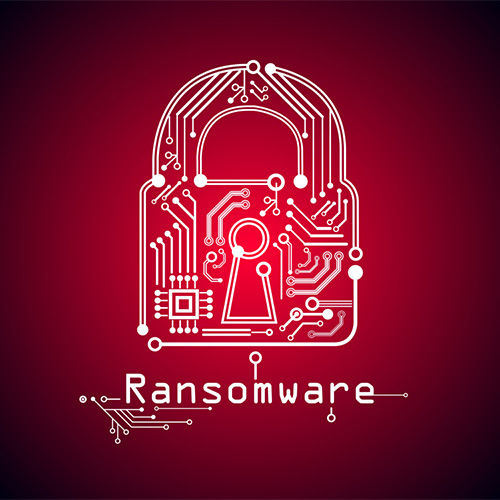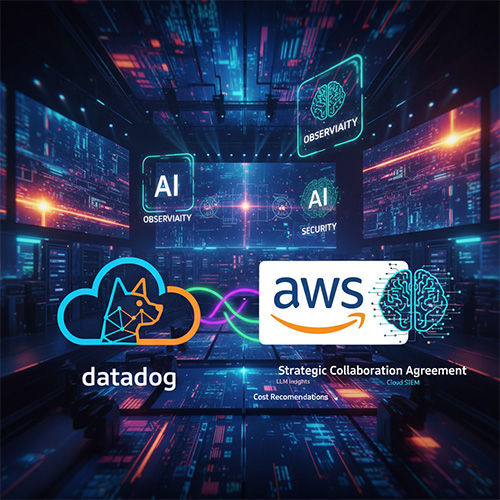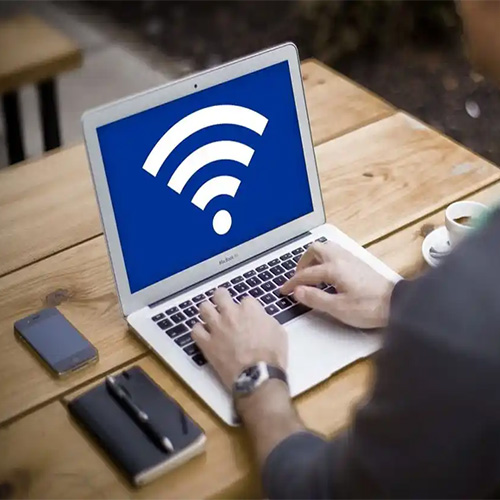Keysight 2020 Predictions Technology Predictions from a [Precision] Electronic Test Think-tank
2019-12-19![Keysight 2020 Predictions Technology Predictions from a [Precision] Electronic Test Think-tank Keysight 2020 Predictions Technology Predictions from a [Precision] Electronic Test Think-tank](https://www.varindia.com/storage/news/uploads/2018/02/5dfb54dc38a79.jpg)
1. New realms of measurement will grow in importance in 2020: Measurement basedtools of many kinds are key enablers for the technology-based products and solutions we incorporate into our daily lives, and it will transform as disruptive technologies come into play.
· In 2020, advanced applications related to 5G, will explode, using higher frequencies and smaller geometries. To support this growth:
o New classes and labs for design and simulation, over the air testing, antenna systems and measurements will be incorporated into the core engineering curriculum.
o New measurement science (hardware, software and calibration) will be developed and made a part of mainstream offerings.
o Developers of new electronic products and solutions will use different tools, specifications and terminology to specify and validate their designs.
· In 2020, the use of software in implementing technology will remain prevalent, especially in networking and position or navigation-based smartphone applications. As a result, software-on-software measurement will see a strong surge and therefore, so will emphasis on interoperability among software tool chains. New standards and certifications will be created, impacting development processes, as well as the marketing required to ensure consumers are aware of what a software-centric product can and cannot do.
· In 2020 there will be a substantial rise in specialized processors, such as GPUs and chips, that implement Artificial Intelligence or AI architectures which determine how a network processes and routes information and maintains security, privacy, and integrity. Quantum computing and engineering will continue to be in an aggressive hype phase in 2020,but the ability to control, measure, and error-correct quantum systems as the number of qubits grows will be important from the start.
· As measurement and operation of the computer blends,those interested in building practical quantum computers will require knowledge about measurement technologies and techniques before the quantum computing goes into the mainstream.
2. Data silos will be connected to extract development insights: Leading companies collect data but typically store it in functional silos: R&D design, pre-production validation, manufacturing, operations and services.
· In 2020, companies will start connecting these silos of data using modern cloud architectures, such as private on-premises clusters, or public sites like AWS or Azure. With the data centrally available, teams will correlate performance through the development process, from early design to manufacturing to field deployment and close the loop back to design. The benefits for these teams include the rapid collection and reformatting of data, faster debugging of new product design, anticipation of manufacturing issues, and improved product quality.
· To achieve these gains, teams will invest in a computing infrastructure, determine how to store the data, including file location and data structure, as well as choose analytic tools to select and process data to identify anomalies and trends. In addition, teams will change the way they work to shift attention to data-driven decisions.
3. 5G and the Data Center: New 5G capabilities in 2020 will put pressure on networks, revealing new data center and network chokepoints.
· Industrial IoT applications will increase access requests and mobile automotive IoT applications will stretch latency demands. Edge computing will become more important to process the increased access requests and meet stringent latency requirements.
· Higher data speeds will place more demands for faster memory, faster data busses, and faster transceivers in the data center. Meeting the speed and flexibility demands will be one reason, but customer traceability through the network for application monetization will be the main driver to upgrade to the latest standards.
· In 2020 we will see advanced design, test and monitoring capabilities that ensure networks and products deliver the performance and failsafe reliability expected. The industry will experience closer collaborations between chipset and product manufacturers, software companies, network carriers, cloud hosting companies and international standards organizations to build tomorrow’s networking infrastructures.
4. Challenges will Aboundto get 5G to Maturity: 5G represents technical evolution and revolution on many fronts creating new technical challenges that span many domains.
· In 2020 the industry will move from a small group of early-movers who have commercialized initial 5G networks, to a global community in which multiple operators in every continent and in many countries will have commercial 5G networks.
· The early adopters will add scale and those who launch in 2020 will quickly resolve issues in their initial deployments. Second-generation devices and base stations will be added to the market, and the standards will have another new release in 3GPP’sRel-16.
· Key technical challenges for the industry in 2020 will be: ensuring performance in mid-band (3.5-5GHz) frequencies, moving mmWave to mobility, transition planning to a full Stand-Alone (SA) 5G network, and resolving architectural decomposition and standards for centralized RAN and Mobile-Edge computing (MEC).
5. The “Internet of Things” will become the “Interaction of Things”: IoT will rapidly move into the mainstream with widening commercial acceptance, increasing public-sector applications and accelerated industrial deployments
· In 2020 we will see an increased level of “smart” experiences when the “Internet of Things” – a collection of devices connected to the internet – becomes the “Interaction of Things” – a collection of things that are communicating and working effectively and efficiently with each other.
· There will be powerful devices working with other powerful devices to act quickly and efficiently in the background independent of direct human intervention. Mission-critical applications, such as remote robotic surgery in the area of digital healthcare or autonomous driving in the area of smart mobility, will feel the impact of this shift.
· While these applications will benefit from the “Interaction of Things”, new solutions will be developed to ensure they do not suffer from the “Interference of Things”, especially when communication failure and network disturbances can bring about devastating or life-threatening consequences. The same will be true of Industry 4.0 applications and smart city applications. Uptime will not be optional.
6. Digital twins will move to the mainstream: Digital twins, or the concept of complete replicate simulation, are the nirvana of design engineers.
· In 2020, we will see digital twins mature and move to the mainstream as a result of their ability to accelerate innovations. To fully realize the technology’s benefits, companies will look for advanced design and test solutions that can seamlessly validate and optimize their virtual models and real-world siblings to ensure that their behaviors are identical.
7. 2020 will not be the year of the autonomous vehicle. Active cruise control, yes. Full autonomy, we have a couple years to go: The quantity and sophistication of sensors deployed in vehicles will increase in 2020, but fully autonomous vehicles will require more ubiquitous 5G connectivity and more artificial intelligence. Here is where we see the industry on each of those areas:
· The ratio of fleets sales with EV or HEV powertrain will grow from single-digit percentage ratio to double-digits in 2020 tripling the shipped units compared to last year.
· The first C-V2X network will hit the streets in China, but they will be operating on an LTE-V network until 5G Release 16 evolves the standard.
· The technical advances for sensors and in-car networks will continue to evolve on a fast pace, needing faster in-vehicle networks. In 2020, Gigabit Ethernet based in-car networks become a reality and significantly improved sensor technology enables artificial intelligence developers to hit new performance levels.
8. System level design, test and monitoring will experience a dramatic transformation: The connected world will force a shift in how performance, reliability, and integrity are evaluated.
· In 2020, realizing the full potential of sensor systems connected to communication systems connected to mechanical systems will require new ways to test at the system level.
· Today, there are available tests for radar antennas and a radar transceiver module. However, testing a multi-antenna radar system integrated into a car will require a different testing approach. The same is true for data centers, mission critical IoT networks, automobiles, and a wide range of new, complex, 5G-enabled applications.
· In 2020, the electronics industry will emphasize system-level testing as the definitive, final step to assure end-to-end performance, integrity and reliability across the increasingly connected world.
9. Education will shift to prepare the next generation of engineers: Universities will adopt a holistic, integrated, and multi-disciplinary curricula for engineering education.
· Academia will tap into industry partnerships to keep up with the accelerating pace of technology and incorporate certification programs, industry-grade instrumentation and automation systems into teaching labs to train students on current, real-world applications.
· To address IoT, Universities will combine methodology from basic electronics, networking, design engineering, cybersecurity, and embedded systems, while increasing emphasis on the impact of technology on society and the environment.
· To address artificial intelligence, automation and robotics, Universities will mainstream currently niche topics such as cognitive science and mechatronics into required learning.
See What’s Next in Tech With the Fast Forward Newsletter
Tweets From @varindiamag
Nothing to see here - yet
When they Tweet, their Tweets will show up here.



























